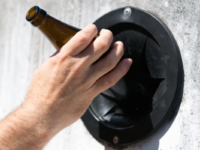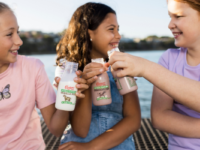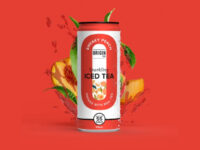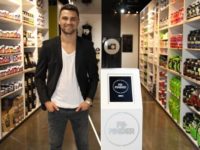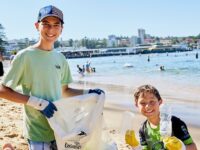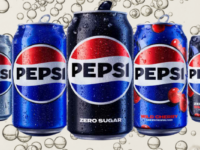 While cola-based beverages make up the largest portion of carbonated soft drinks (CDS) on the market in Australia, water, energy and dairy drinks are proving to be the strong performers in the beverages industry.
While cola-based beverages make up the largest portion of carbonated soft drinks (CDS) on the market in Australia, water, energy and dairy drinks are proving to be the strong performers in the beverages industry.
Sparkling beverages dropped in volume in the first half of 2016 while health-conscious consumers looked at their sugar intake, and there is a trend toward smaller drink sizes.
However, the cola segment has remained stable as a proportion of industry revenue, according to the latest IbisWorld Soft Drink Manufacturing in Australia report (June).
Adding to the mix are variants such as vanilla cola and lime cola, as well as rising consumer health awareness resulting in the introduction of diet and low-sugar options. Asahi introduced Pepsi Next in 2012 with 30 per cent less sugar, while last year Coca-Cola Amatil (CCA) released a similar product, Coca-Cola Life.
“Cola CSDs have maintained strong sales despite weaker economic conditions, with consumers turning to familiar brands, trading down from high-value fruit drinks and smoothies,” says IbisWorld senior industry analyst Tommy Wu.
“Private-label CSDs are increasingly prevalent, but Coca-Cola remains the highest-selling brand in this product segment.”
Worth $4.4 billion, the carbonated soft-drink market in Australia comprises 50.8 per cent cola-flavoured CSDs, 23.6 per cent other flavoured CSDs, 7.7 per cent sports drinks, 7.5 per cent energy drinks, 4.4 per cent mixers and 6.1 per cent other.
Willing to pay
While supermarket private labels have been ramping up their offer, the major brands have been successfully fighting back with heavy discounting, and IbisWorld notes that consumers are generally willing to pay higher prices for Coca-Cola and Pepsi.
Of all CSDs in Australia, CCA holds a 53.8 per cent market share, according to IbisWorld, while Asahi Holdings has 24.9 per cent.
As well as the Coca-Cola range and other traditional soft drinks like Fanta, Lift and Sprite, CCA’s product stable includes Appletiser, Deep Spring, Glaceau Vitaminwater, Kirks and Powerade. There is also Mother, which is credited with increasing revenue along with Coca-Cola Life.
In April, CCA announced the securing of a multi-million-dollar distribution contract for up to 20 years for Monster Energy drinks across Australia and New Zealand, the contract taking effect from May.
Asahi Holdings (Australia), has exclusive bottling rights over Pepsi brands in Australia, entered the industry here after acquiring the $1.2 billion Cadbury Schweppes Australia beverage business in 2009.
Sugar-free driver
PepsiCo has undertaken several initiatives in the past year to drive the profile of its core brands, as well as expanding distribution and marketplace presence through strategic business wins.
“Pepsi Max delivers maximum cola taste with no sugar, and has been instrumental in establishing and driving sugar-free cola consumption in Australia,” PepsiCo senior beverages director Brad Van Dijk tells Inside FMCG.
“It’s the largest brand in our Australian beverage portfolio, and we’re proud to say that Pepsi Max is the leading no-sugar cola brand in Australia (IRI volume and value growth for the year to August vs LY) … growing by 4.8 per cent in volume and 4.7 per cent in value (August YTD).”
Pepsi Max Lime was launched in the first quarter of last year. “This resulted in the Max brand continuing to be the leading no-sugar CSD brand in the category, according to August data,” says Van Dijk. “No-sugar cola is the biggest segment of no-sugar CSDs, and Pepsi Max Lime drove incremental growth within segment.”
As well as Pepsi and Schweppes, other brands PepsiCo holds include Gatorade, Mountain Dew, Passiona, Solo and Sunkist.
Sports link
For Gatorade, PepsiCo developed a campaign leveraging its association with global athletes such as Serena Williams and Usain Bolt, combining them with AFL superstars. “We brought this to life in-store through an exclusive promotion with Woolworths that delivered record We’ve seen from dietary intake surveys that pack sizes have a big bearing on what consumers are buying. results,” says Van Dijk.
“We launched Gatorade Fierce Strawberry, then backed this up with the launch of Gatorade Liquid Concentrate, designed to extend use to training occasions throughout the week while offering great value.”
The new one-litre bottles of Gatorade Liquid Concentrate come in two flavours, Blue Bolt and Lemon Lime. “Each bottle makes up to five litres of Gatorade by simply adding water,” says Van Dijk. “The product also provides Aussie athletes with a liquid alternative to the various powdered options on the market.”
“Critical to our success has been securing strategic new business that plays a key role in both driving sales and raising the profile of our brands,” says Van Dijk, citing alliances with Gloria Jeans Coffee, P&O Cruises and Perisher Ski Resort.
PepsiCo has also renewed its longstanding partnership with KFC and Pizza Hut, together with an expanded range of products through its partnership with Schweppes Australia.
Challenging market
Meanwhile, CSD market conditions, particularly in Australia, continue to be challenging, CCA group MD Alison Watkins says in Coca-Cola Amatil’s half year report in August.
“In Australia volumes in still beverages increased by 9.3 per cent, driven by strong performances in water, energy and dairy,” says Watkins. “This was the result of innovation and investment across the categories that started last year, including the introduction of Fuze tea and Monster Energy, and the new Mount Franklin marketing campaign.”
She says the improved performance across each of these areas helped offset the structural adjustments continuing in Australian sparkling beverages, which had a drop in volume in the first half.
“We are moving to meet consumer demands with a greater focus on portion size, and product reformulations in sparkling and increased investment in stills.”
This increase in conveniently sized packs, wider flavour variety in energy and sparkling waters and low-joule options is being ramped up toward the goal of offsetting the general slowdown in the CSD market as well as addressing consumer health concerns.
“One of the interesting innovations lately has been around packaging and pack sizes,” Australian Beverages Council CEO Geoff Parker tells Inside FMCG. “We certainly have seen – and this would be true for cola and other flavours – a move toward smaller pack sizes.
More choice
“We’ve seen from dietary intake surveys that pack sizes have a big bearing on what consumers are buying.” He says companies have been responding responsibly not only to the needs of consumers, but also to the calls from governments, NGOs and the public health sector to provide more choice.
Parker says the council’s Australian Health Survey clearly shows a fundamental shift away from traditional regular kilojoule varieties toward low and no-kilojoule options.
He says that over the past 15 years, for example, people have reduced their sugar intake from soft drinks by 26 per cent. As well as reflecting changing consumer tastes and more health awareness, this also shows that what people drink depends on their stage in life.
Males between 14 and 18 years, for example, want more sugar and larger packs. Those who buy sports drinks want less sugar, while older people want smaller drinks. As a result, the 375ml can has been replaced by 200 ml cans and smaller bottles.
As well as innovative pack sizes and no/low-joule variants, rising stars are bold flavours, often inspired by citrus or exotic fruits. “Flavoured mineral waters and the like are certainly piggy-backing off the popularity of bottled water as a safe and convenient drink when people are out there on the go,” says Parker.
“That’s one of the really good things about the beverages industry – it is really quick to respond.”
This article appeared in the October edition of Inside FMCG magazine. Subscribe now.



